Caviar and Kashima – When will mountain bikes breach the € 20,000 mark?
€ 15,000 for a mountain bike? With some bike brands, this has become the norm instead of the exception! Bikes keep getting more and more expensive, which also has serious consequences for the entry- and mid-price segment. Will biking become the new golf for the champagne elite or do brands still think of normal income earners?

If your name isn’t Elon Musk or Bill Gates and you don’t care if you’ve got a billion more or less in your account, you might have noticed that bikes have become increasingly expensive in recent years. Before some of you start wagging your finger at us while pointing out the laws on supply and demand: relax, we’ll get to that. Biking is already quite an elitist affair due to the already high financial barrier to entry. But are the ever-increasing prices finally turning the sport into an exclusive pastime for high-earning engineers, IT professionals and rich kids? Yeah, okay, we know you’re waiting for this: dentists and orthodontists. Is the bike industry losing sight of the people who really make up the sport, or are the price increases a necessary response to the demands and needs of the evolving bike scene? We investigated the reasons for the price hikes for you, got in touch with various brands and found out whether you will still find affordable bikes in the future.
Why are bike prices going through the roof?
The unpleasant topics of inflation and price hikes have become omnipresent during the last few months. However, while prices for food and energy have only shown a sharp incline in recent months, this trend isn’t all that new in the bike market. And there are a variety of reasons for this. Starting with the fact that bikes are just getting better and better. In recent years, we’ve had one new technological development followed by the other, like the development and establishment of the first hydraulic dropper post a few years ago to the latest electronic Flight Attendant or Live Valve suspension. All these developments and innovations make bikes better but also more complex and expensive! And let’s face it, who doesn’t want a bike with a dropper post? Or a matte-glossy carbon frame with all the bells and whistles? Furthermore, cost-driving digitalisation and connectivity solutions become necessary with ebikes and other electronic components, which by themselves require a battalion of software development specialists. Particularly ebikes are a lot more complex and require more maintenance, which is also reflected in their prices.
And that brings us to another, not insignificant point: the bike industry increasingly has to compete with other industries for developers and engineers. For a long time, the bike industry wasn’t very high-paying, and while it still applies to many companies today, that’s changing. Bike companies that develop their own motor or battery concepts for ebikes and large automotive corporations now compete for the same skilled employees. Companies that want to offer their own bike connectivity solutions need developers who could also work for large tech companies. Whether they’re based in Silicon Valley or around Stuttgart, corporations such as Rivian, Tesla, Apple, Porsche, Bosch or Mercedes are hungry for engineers and IT students, sometimes actively and aggressively luring staff away from bike companies with the promise of large paychecks. If you talk to people who have made this change, their lives have rarely become more fulfilling, but the promise of a big wage boost was just too tempting. This highly competitive job market requires the corresponding salary margins for a bike company to maintain its development competence and employee base, which has a direct or indirect impact on sales prices.
Many companies in the bike industry have also started increasing their investment in customer service. Especially direct-to-consumer brands, who are working to create a complete customer experience. However, large concept stores, test fleets and customer support teams all cost money. Therefore, hour-long phone queues and sluggish warranty processing will soon be a thing of the past, hopefully. It’s an investment that should pay off.
If innovation and competition for engineers are the driving force behind rising prices, then the Covid pandemic only added fuel to the fire. Almost every rider will have noticed that some bicycles were harder to come by during the last 2 years than a family pack of toilet paper. Due to the demand for bikes, which has suddenly gone through the roof, and the limited supply, prices have gone up considerably. Lead times of more than a year and several price increases within this time weren’t uncommon. Closed factories, a short supply of workers, competition from other manufacturers for scarce components and limited production slots. All these are reasons why companies couldn’t produce nearly enough bikes to meet demand. Add to that freight costs, which, at the height of the crisis, were about 20 times higher than before the pandemic, ultimately settling down to well above the pre-pandemic levels. Not to mention the sharp rise in raw materials prices. All this adds up and bike brands pass it onto the consumers. Smaller manufacturers got hit even harder.

Why are some bike brands so much more expensive than others?
Mountain bikes are available in a wide range of classes and prices, from the € 1,500 hardtail to the € 15,000 light eMTB. And there are big differences in pricing between brands. How do CUBE manage to offer bikes with the same spec at a significantly lower price than Santa Cruz, for example? And how do high-priced bike brands justify the amounts they charge?

The bike market has changed enormously over the last 10 years. In the past, classic brands such as Trek, Specialized or GIANT dominated the market and distributed their bikes through local dealers. Today, the bike market looks slightly different: direct-to-consumer brands like YT Industries, Canyon, COMMENCAL, ROSE and Propain have thoroughly mixed up the market and established a new way of selling bicycles at significantly lower prices. The core principle of the new concept is getting rid of dealers. You can order the bike directly from the company’s online shop and have it delivered to your home, though you must build the bike up yourself, though it has to be said that some companies got very good at it and simplified the assembly for their customers a great deal. With this distribution method, the companies can bypass the margins added by the dealers and pass the savings on to you. On the flip side, you often don’t have a direct contact person on site. You might also have to wait several months to get a warranty claim handled or spend an eternity on the phone in different queues or shooting emails if you’ve got a question about your bike. Some of these companies have even stopped assembling the bikes themselves, commissioning cheaper contractors to do so instead. However, this doesn’t affect the performance and the bikes from direct-to-consumer brands don’t have to hide from the competition!
Large and exclusive brands such as Santa Cruz or Trek take a different approach and continue to rely on dealers to ensure high-quality, face to face service. However, many brands are slowly replacing this model with the omni-channel model. With this, the brands no longer rely exclusively on local dealers, but also offer the option of ordering bikes online and having them delivered to your home or the nearest bike shop.

Specialized and Trek have established themselves as the leaders of innovation, continuously delivering new technical developments. But this comes at a premium: the Kenevo SL from Specialized and the Fuel EX from Trek both go for € 15,000. Other, smaller premium brands use special new production methods or only produce limited quantities, thus making them exclusive and exotic. UNNO produced handmade carbon frames in small quantities in Barcelona, for example. While their production has now moved to the Far East and prices have thus also fallen, UNNO still produce small quantities of very exclusive bikes for a rather small target group. Atherton Bikes are another great example of special production methods in limited quantities. The small company from Wales, founded by the Atherton siblings, uses a special manufacturing process that is still rare in the bike industry, bonding carbon tubes with 3D-printed titanium lugs. This allows them to offer many different sizes and even custom geometries. Entirely handmade in Wales, they’re priced accordingly, of course… In addition to exclusivity and innovation, many premium brands are also committed to higher quality and durability.

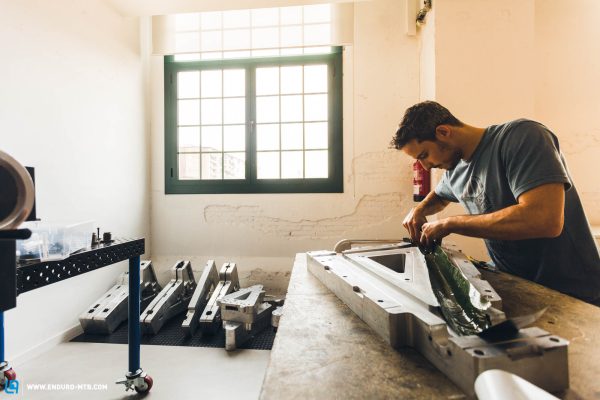
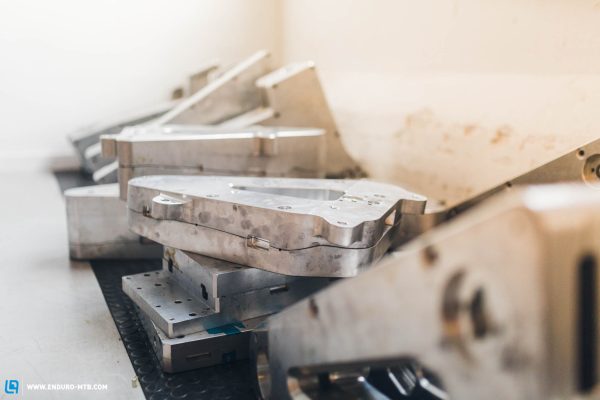
Now, that’s all well and good, but you might ask yourself how is it that I could get a high-end motorcycle or a small car for the price of a well-specced bike? Yeah, we asked ourselves the same question too. It turns out the reason for this is the bike industry’s very high degree of specialisation, among other things. While almost all motorcycle components, from the spoke nipples to the seat cover, are produced in-house, it’s the exact opposite with bicycles. Most bike brands develop their own frames, but they don’t have their own factories and outsource production to manufacturers in the Far East instead, often in Taiwan, Vietnam, China, or Indonesia. Then, almost all the components used to build up the frame are sourced from external suppliers. Of course, the suppliers also want to get their share of the cake and must earn money, adding a profit margin to every component. Moreover, the scarcity of components during the last two years has given suppliers more bargaining power, not just increasing their prices but also their margins – in addition to the usual price increases of raw materials, energy, logistics, personnel, and production. This adds up significantly for a complete bike. The problem is exacerbated by model variants with different components and a mix of different groupsets. Thus, the ability to customise bikes drives up their prices! Some bike companies have recognised the potential of their own component brands and are trying to source as many components in-house as possible. Incidentally, they’re not just doing so for cost-saving reasons, but also to develop their own components to provide improved performance, usability and user experience.
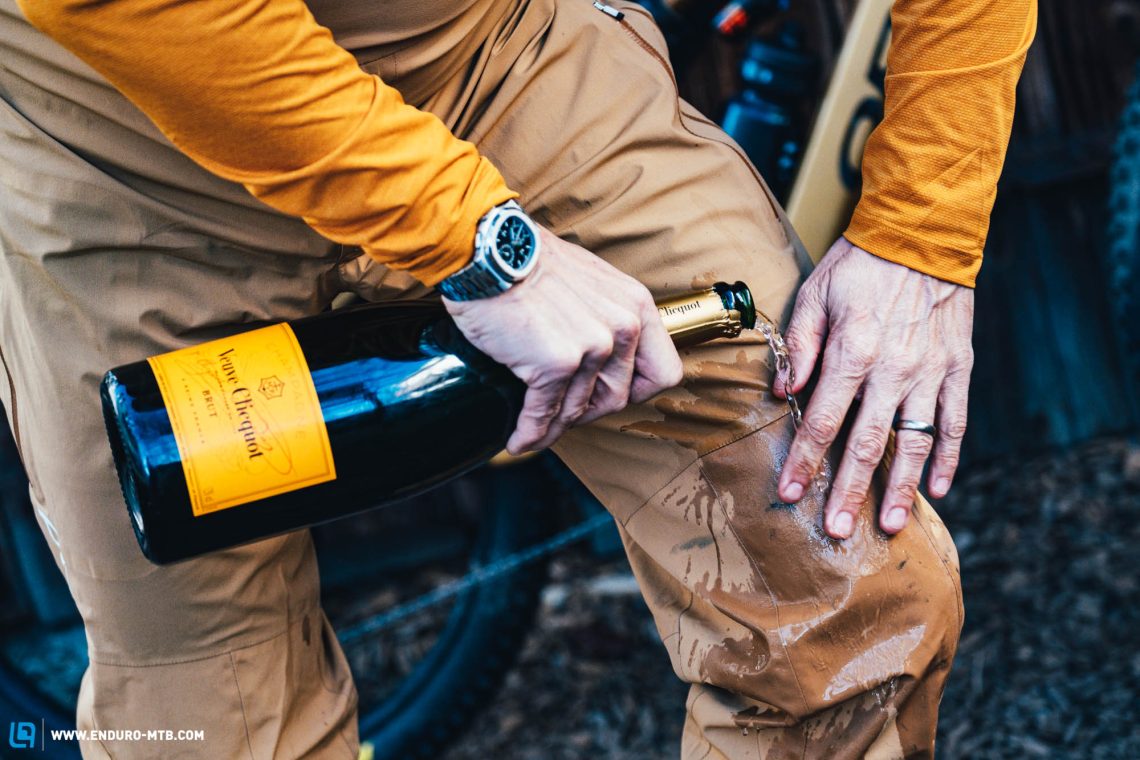
Who does the bicycle industry even build bicycles for?
Looking at bike media, advertisements and the catwalks that are shuttle queues, you could get the impression that manufacturers only build high-end bikes for top tier professionals. However, it’s easy to forget that the high-end models are meant to serve as the respective brands’ showpieces and innovation carriers, with the aim of making the general public want more. For some companies, expensive and premium bikes are part of their brand identity and are an important factor in positioning themselves as an “aspirational brand”. Similar examples can be found in other industries, like the automotive world and the realignment of the Mercedes, for example, who only want to sell exclusive premium models in the future in order to regain their status as a premium brand. With the sale of the road bike brand, Pinarello, to the LVHM group (Moët Hennessy – Louis Vuitton), the world of luxury brands has now officially entered the cycling industry. While we’re still waiting for the first road bike donning the Louis Vuitton livery, and though you won’t find Moët in most water bottles, there’s no denying that parts of the bike industry are developing an ever-greater propensity for exclusivity and premium price points.
But it’s not just the growing market for ridiculously expensive luxury bikes that’s changing the industry. New and necessary influences such as a growing demand for sustainability and longevity also promote and require new concepts. We’re seeing new brands emerge that place a very strong focus on the longevity of their products while doing away with unnecessary frills, like RAAW and Privateer Bikes, for example. The conscious consumer target group that wants to buy products with a clear conscience will continue to gain importance in the future. It’s a trend that the bike industry will have to respond to accordingly.
But if you don’t know and don’t care what Moët tastes like, couldn’t be bothered with wireless remotes, and the mention of the current climate change report doesn’t make you feel glum, you’re probably in the core scene. As part of the core scene, you want bikes that perform, you don’t need unnecessary gadgets, and you’re willing to pay a reasonable price. This group is likely to represent the greater part of the bike community, although it still is divided into an infinite number of subgroups, of course. As part of the core scene, you might recently have started asking yourself whether the bike industry isn’t losing sight of these riders and setting the wrong priorities because the majority of riders in this group would benefit the most from bikes with high-quality suspension, powerful brakes, cheap drivetrains, and durable components elsewhere at a moderate price. After all, who really needs an expensive super-duper rear derailleur when it’ll just end up bent in all directions after a season anyway. Or a sexy clear-coated carbon cockpit if in-house components can do the job equally well. We can’t deny that the latest and greatest shit attracts bikers like moths to a flame, and that the shuttle queues will always be a kind of catwalk, but good suspension is much more important than bling, as it contributes significantly to the bike’s performance, just like good brakes, which are expensive to upgrade. Unfortunately, with the exception of a few brands, those looking for a build like this won’t find many options to choose from.
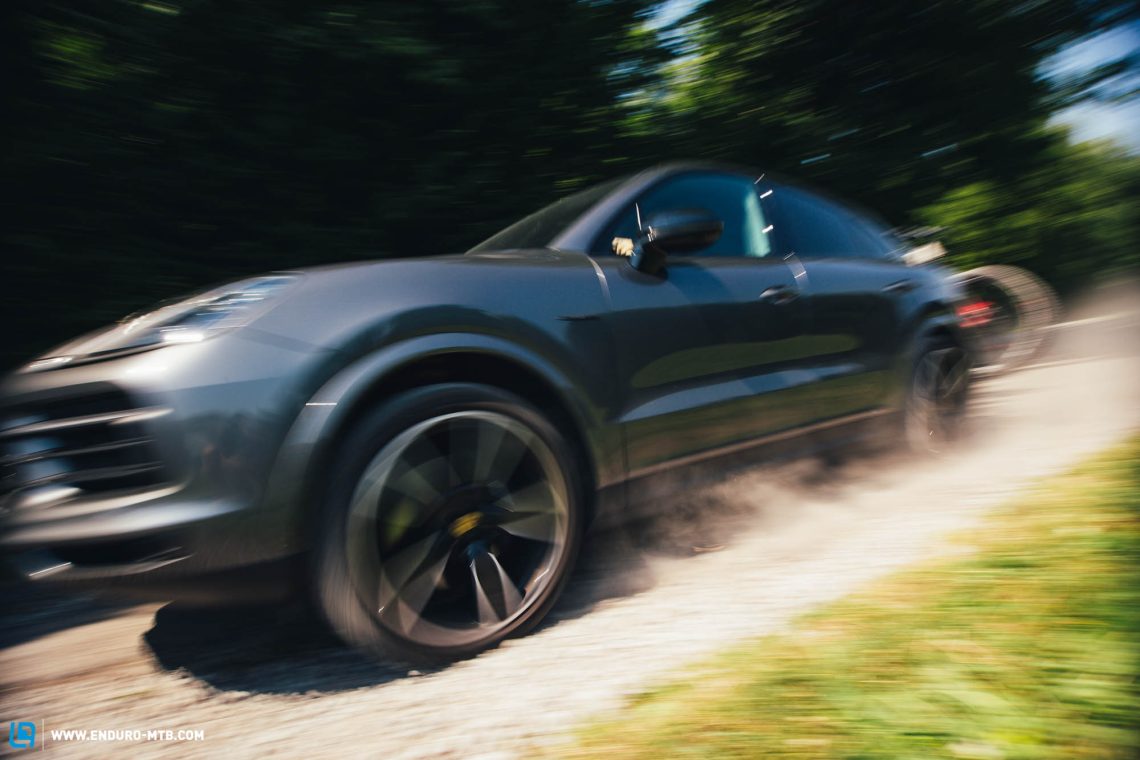
Are bike companies indebted to the scene/sport?
Most bike companies are born out of the scene. The people that make up our sport allowed them to grow and become the corporations that they are today. Small backyard companies that built bikes out of passion eventually turned into multinational corporations with ex-Amazon managers calling the shots. Are they selling out or is it a necessary professionalisation as the companies simply become too big for their founders to run? Many companies try to remain visible and engaged in the community by supporting trail building projects, events or local clubs and teams. Doing so definitely contributes to keeping the scene alive and getting new riders involved, whether they’re youngsters and teens or older folks looking for a new hobby.
In stark contrast to that is the fact that companies have suspended the production of kids bikes due to limited production capacities during the pandemic in order to focus on high-end bikes for adults, which allow them to achieve bigger profit margins. The hefty price increases that some brands implement for bikes with lower-end components – sometimes a couple of times per year – are a big blow to the bike scene as well. Thus, they’re bolstering the sport’s elitist character and lots of interested people are finding it more and more difficult to get started. Those from less privileged social classes are more or less excluded from mountain biking. We know that bike companies aren’t and never will be non-profit welfare organisations, but we would still love to see more focus on accessibility and social diversity in cycling. Thanks to the bike boom, we’ve experienced how new riders with different backgrounds help to expand and enrich the scene. It’s important that new riders are taken in and welcomed instead of being looked down upon. Just because you’ve been involved in a sport for a long time doesn’t mean you can dictate the rules for others or have more right to pursue a hobby than a newcomer. In addition, with more diversity within the bike scene, you get new ideas and more innovation, which we all benefit from!
Have bikes become too expensive?
To answer whether bikes have become too expensive, you would first have to define what “too expensive” means. And if you had to ask a hundred riders, you would probably get at least 99 different definitions. From a matter-of-fact, market point of view, you could say that a product is too expensive if no one buys it. But, since matter-of-fact is boring and we aren’t economists, we’ll look at the topic from a slightly different perspective. It is becoming increasingly difficult for salespeople in bike shops to justify the prices for bikes. Because it takes a very persuasive salesperson to explain the fact that the same bike that was standing in the shop yesterday costs more today without the components, the geometry or the look having changed. If that doesn’t just happen once but several times a year, salespeople and customers will start questioning what’s going on. Another sign that bikes have become too expensive is the fact that some companies have lowered prices for certain models mid-season. Nevertheless, it remains a very subjective matter, especially because the price of a bike doesn’t necessarily reflect its value. A bike’s value is determined by a vast variety of personal factors. You might link a certain memory to a certain brand. Or you can identify with the brand’s principles. Perhaps you place importance on a specific geometry or the frame material. These are just a few examples of how every one of us gives each bike a different value, which prices can’t accurately reflect. Trail riding is an absolute luxury – it does us a lot of good, mentally and physically, but nobody really needs it. For many, it’s a part of their identity and that includes the right brand and product. All too often, we define ourselves by the hottest new watch or car, and we’re not about to condemn doing so, after all, the latest innovations and high-end products are very appealing. Nevertheless, most of us are more than a little shocked when we see a € 15,000 price tag on a bike. And that isn’t the upper limit by a long shot. The question is not whether a brand will break the € 20,000 mark for a bike, but rather when and which brand will do it first. And then we’ll talk again about whether bikes have become too expensive…

What’s the cost of expensive bikes?
In view of the limited production capacities of the past few years, it’s the entry-level category that’s often suffered: kids or beginner bikes around € 500 have been partially or completely removed from brands’ portfolios and some dealers no longer offer bikes like these. Others have increased their prices to match general inflation rates. However, these are price-sensitive segments, so there’s a limit to how high you can push the prices. If you go too high, certain target groups fall away because they’re just not willing to pay that much. Therefore, some manufacturers have slimmed down their model ranges over the last two years instead of thinking about how to make entry-level bikes more affordable. This hasn’t stopped new riders coming into the sport just yet, but if no such bikes are available at reasonable prices, it’s sure to cause problems.
But it’s not just in the sub € 1,000 range that price increases have serious consequences. Mid-level bikes are being affected by the technological arms race – no matter whether it’s motors, battery capacities, materials, or feature wealth. Bikes are becoming increasingly technical and complex. We’ve seen the same thing happen in the automotive sector: in the past, you had simple vehicles with interior and rear-view mirrors, whereas the futuristic city SUVs of today have numerous parking sensors, parking aids and 360° cameras as part of the basic package, which is inevitably reflected in a higher price point. It’s no different with bikes: beautiful welds, eye-catching paintwork, storage boxes in the down tube, internally routed cables, large batteries, and high-quality motors with numerous tuning options. It all comes at a price. While the associated surcharges don’t impede the high-end models, they cause serious problems in the mid-price segment. It’s become impossible to produce reasonable entry-level ebikes with many of today’s high-end motors. Three years ago, you could buy an entry-level eMTB for € 3,500, today, you must pay € 1,000 more for the same category model. The customers’ budgets can rarely keep up. The Bosch Smart System and ABS technologies are amazing, but they’re just not compatible with certain price ranges. Sure, there will always be some customers who want and use all the gimmicks, but most of us just want to ride. Customers don’t derive any value from features they don’t need and don’t use, but they must pay for them nonetheless.

Gazing into the crystal ball
What does the future hold? Affordable bikes with excellent components? Or will prices continue climbing and bikes become scarce luxury goods? So far, sales for 2022 have remained well below expectations, which could get the bike industry to rethink its approach.
The discount battle in the entry-level and mid-price segment has already begun. Discounts ranging from 10 to 40% are becoming more common while trade is slowing worldwide. Contrary to expectations, many bikes have started collecting dust in bike shops and the high demand seems to be dropping again for the time being – especially in view of the rising energy prices that are eating away at peoples’ budgets. Added to this is the delayed production, which is causing the market a lot of problems. Due to the bike industry’s very rosy looking trade year in 2021, bike companies placed large orders at prices that are no longer sustainable today, and in quantities that are significantly higher than demand. For example: a dealer ordered a bike for € 3,500 in 2021, which he must now purchase for € 4,500 due to various price increases – with partially outdated or lower-end components. Moreover, these inflation rates mean that fewer models fall within the price limit of company bikes or job leasing bikes. As mentioned above, the price increases are also causing retailers to lose customers. If a dealer ordered 10 bikes for € 3,500 each and had 10 potential customers for it, he’s now left with just 3 customers for the same bike because it costs around € 1,000 more, leaving him stuck with the remaining 7 bikes.
After a disappointing summer for many retailers, many products that were ordered a long time will arrive in large quantities in the autumn of 2022, with the season already over. Some dealers don’t know where to put all the goods because they don’t have the storage space. Of course, these large quantities of inventory also affect the dealers’ liquidity, who are now facing a winter that’s not looking very promising along with high energy prices. Apart from discounts and sales, there’s little they can do. The dealers who have been able to set aside some of the income from the high sales of the last two years are fortunate. What they need now is for bike companies to collaborate with them, offering long payment terms, for example.
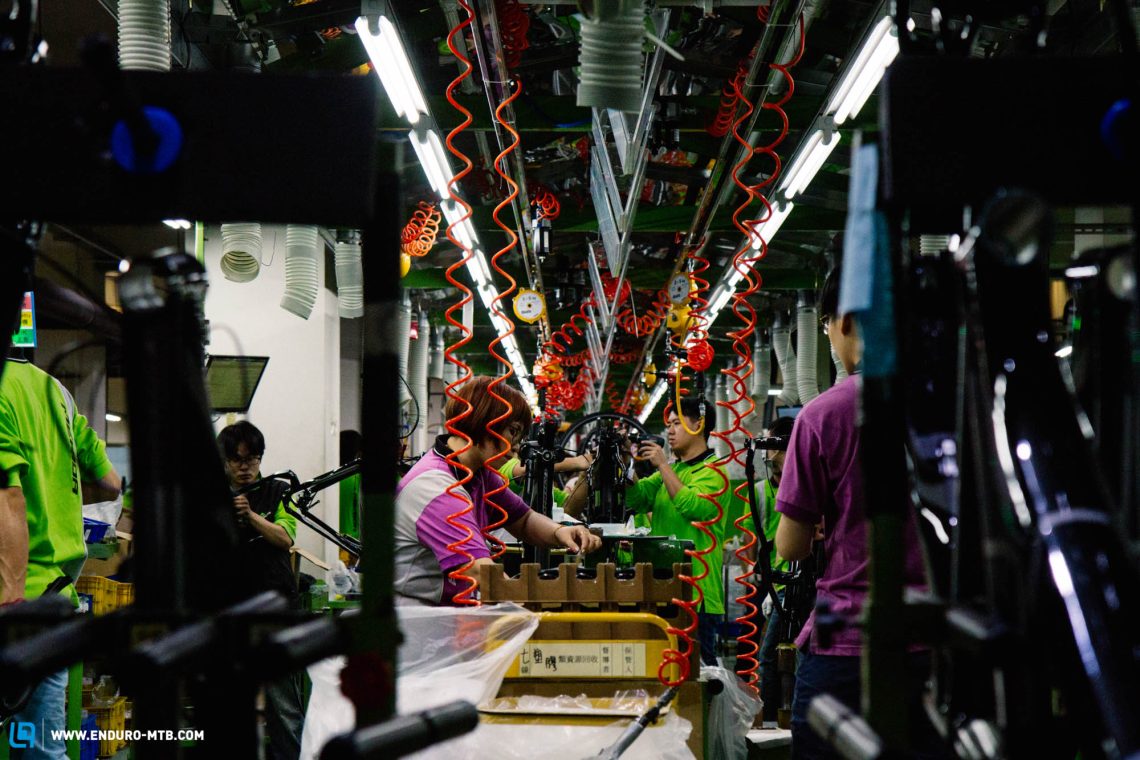

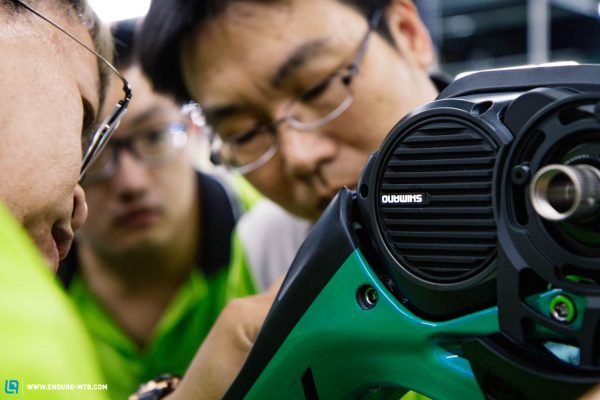
For the bike companies, the situation is looking up: production slots are freeing up in the factories of the Far East, partly because some brands are reducing or cancelling their orders due to reduced demand. Many companies expect the availability of bikes and components to normalise by 2023/24. With this, prices should level off and the bike market relax.
Even though the industry’s rapid growth is slowing down as the pandemic wanes, we still expect the steady influx of new riders to continue and the industry to grow steadily. This influx won’t just be limited to the MTB scene but will also cover other areas. E-mobility and urban mobility are the buzzwords of the hour! All signs also indicate that a large part of the newcomers have now caught the bug and are getting more and more involved. The trend remains clear: we expect more riders, more variety and fresh energy.
The fact is that the bike industry has evolved rapidly in recent years and there has never been a wider selection of bikes available as there is today. The selection of outstanding bikes has never been as big as it is today either. At the same time, however, bikes are more expensive than ever before and the barriers to entry are getting increasingly higher. You get the feeling that the bike industry is at a kind of crossroads here. Every era goes through changes and every growth spurt causes growth pains, compromises and people who feel left out. The current price developments have sent waves of discontent throughout the scene. The crucial question now is whether the industry will be able to meet both the needs and demands of new target groups and those of die-hard bikers? There’s little we can do about the occasionally necessary price increases, commercialisation, digitalisation and service improvements, or the inevitable cost increases for logistics, personnel, energy and raw materials. Nevertheless, companies can ensure that, despite everything, their prices don’t scare off riders by adjusting their model policy, shortening supply chains, or diversifying production. The good news in all this is that the bike industry’s future is in its own hands, as it can use its model and product policy to control how it approaches different target groups to keep things attractive at different price ranges in the coming years. The Specialized Status is a good example, combining simple technology with excellent performance from a premium brand.
The € 20,000 bike will come – the question is not if but when. There’s no denying the appeal of more performance, more fascinating technology, and greater exclusivity. But this comes at a cost to the entry-level segment. It’s up to the bike industry, its developmental focus, and model policy to keep cycling affordable and accessible. In addition to the premium, high-tech rockets, we also need simple bikes that are affordable, durable, and at least as sexy.
